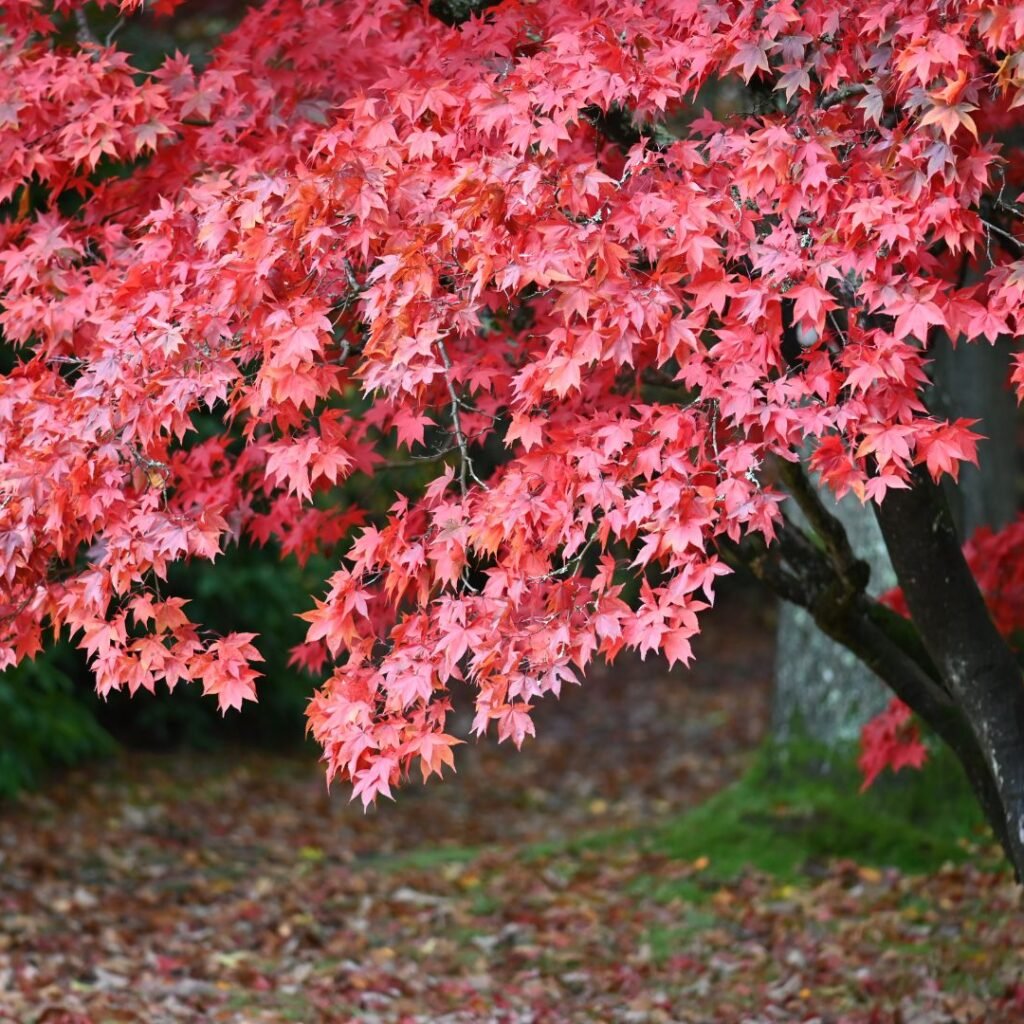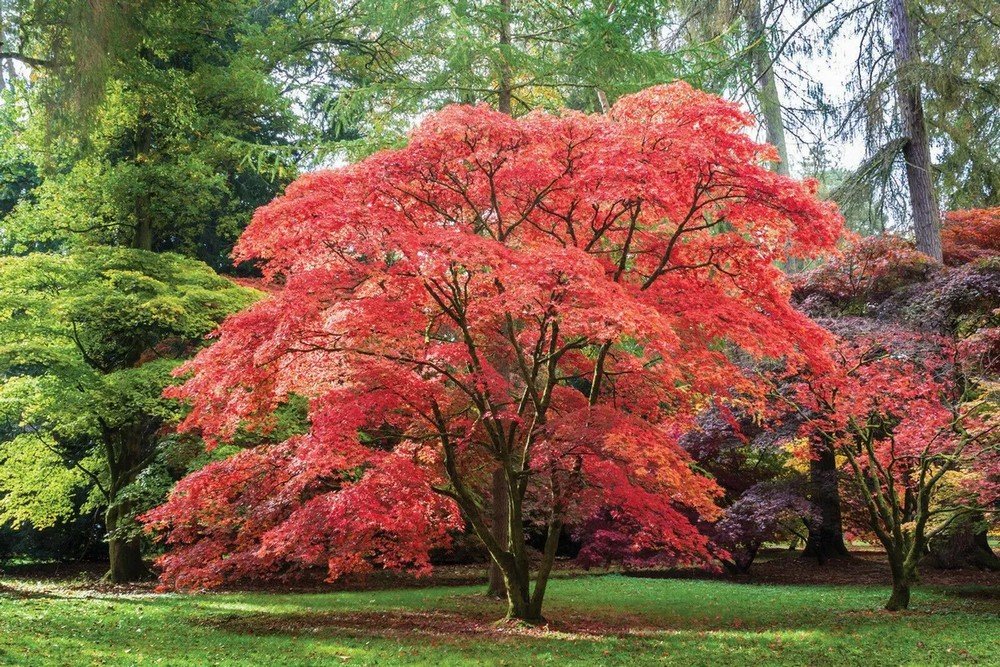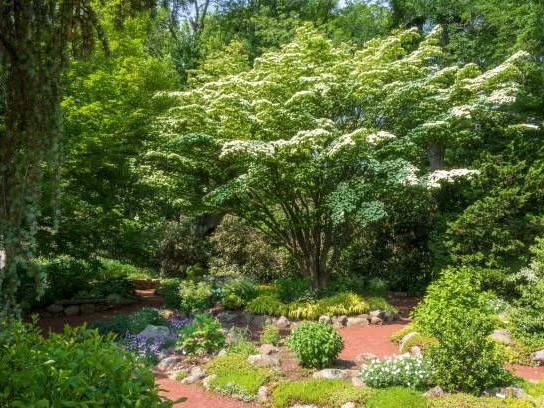Urban gardens are unique spaces. Unlike sprawling country landscapes, city gardens, courtyards, and compact backyards require thoughtful plant choices that balance beauty, function, and scale. Large trees can overwhelm limited areas, shading out smaller plants and interfering with buildings or utilities. That’s where small trees shine.
With their manageable size, adaptability, and ornamental value, small trees bring color, fragrance, privacy, and even food to tight spaces. They serve as focal points, soften hardscapes, attract pollinators, and make an urban garden feel lush and alive. In this article, we’ll explore five small trees perfect for urban gardens, along with planting tips, benefits, and design ideas to make the most of your green space.
Why Choose Small Trees for Urban Gardens?

Before diving into the list, let’s understand the appeal of small trees in city landscapes:
- Space-Friendly – They typically stay under 25 feet tall, making them manageable in narrow yards or near buildings.
- Low Maintenance – Most small trees require less pruning and care than larger varieties.
- Ornamental Appeal – They offer flowers, foliage color, interesting bark, or fruit without dominating the garden.
- Environmental Benefits – Even small trees filter air pollution, reduce heat, and support wildlife in urban settings.
- Versatility – Many can be grown in pots, used as patio accents, or planted along borders for privacy.
Now, let’s look at five standout small trees that thrive in urban gardens.
1. Japanese Maple (Acer palmatum)

Why It’s Perfect for Urban Gardens
The Japanese maple is a classic choice for small spaces. Revered for its elegant, finely cut leaves and graceful branching, it brings year-round beauty to even the tiniest courtyard. With dozens of cultivars available, you can find one that fits your garden’s style and size.
Key Features
- Height & Spread: 10–20 feet tall, often wider than tall.
- Seasonal Interest:
- Spring: Fresh green or red foliage.
- Summer: Delicate leaf texture provides shade and elegance.
- Fall: Brilliant red, orange, or yellow foliage.
- Winter: Sculptural branching adds structure.
- Varieties to Try:
- Acer palmatum ‘Bloodgood’ (deep red foliage).
- Acer palmatum ‘Dissectum’ (laceleaf form).
Planting Tips
- Prefers partial shade, especially in hot climates.
- Plant in well-drained, slightly acidic soil.
- Protect from strong winds to prevent leaf scorch.
Design Idea
Use a Japanese maple as the centerpiece of a small courtyard garden or in a container near an entrance for year-round impact.
2. Serviceberry (Amelanchier spp.)

Why It’s Perfect for Urban Gardens
Serviceberry, also called Juneberry or Saskatoon, is a multi-season star. It’s small, adaptable, and offers flowers, edible berries, and brilliant fall foliage—all in one package.
Key Features
- Height & Spread: 15–25 feet tall, often grown as a large shrub or small tree.
- Seasonal Interest:
- Spring: Clouds of white blossoms attract pollinators.
- Summer: Blue-purple berries, loved by birds (and edible for humans).
- Fall: Fiery orange to red foliage.
- Winter: Smooth gray bark provides contrast.
- Varieties to Try:
- Amelanchier canadensis (compact, multi-stem form).
- Amelanchier alnifolia (cold-hardy, edible berries).
Planting Tips
- Thrives in full sun to partial shade.
- Prefers moist, well-drained soil but tolerates urban conditions.
- Plant where you can enjoy both flowers and fruits up close.
Design Idea
Incorporate serviceberry along a fence line for seasonal screening, or near a patio to enjoy its blossoms and fruit.
3. Flowering Dogwood (Cornus florida)

Why It’s Perfect for Urban Gardens
Few trees rival the charm of flowering dogwoods. With showy spring blooms and attractive branching, they’re ideal for small urban landscapes where a statement piece is needed.
Key Features
- Height & Spread: 15–25 feet tall and wide.
- Seasonal Interest:
- Spring: White or pink blossoms that last for weeks.
- Summer: Glossy green foliage provides shade.
- Fall: Scarlet-red foliage and bright red berries.
- Winter: Layered branching adds interest.
- Varieties to Try:
- Cornus florida ‘Cherokee Princess’ (vigorous white blooms).
- Cornus florida ‘Rubra’ (soft pink flowers).
Planting Tips
- Prefers partial shade with morning sun and afternoon shade.
- Needs rich, well-drained soil.
- Protect from drought and extreme heat in urban areas.
Design Idea
Plant dogwood as a specimen tree in the front yard to greet visitors with its seasonal display.
4. Crape Myrtle (Lagerstroemia indica)

Why It’s Perfect for Urban Gardens
Crape myrtle is the ultimate city tree, thriving in heat, tolerating poor soils, and offering vibrant color in summer when many other trees look tired. Its compact size makes it a fantastic option for urban spaces.
Key Features
- Height & Spread: 10–20 feet tall, depending on variety.
- Seasonal Interest:
- Summer: Long-lasting clusters of flowers in shades of white, pink, purple, or red.
- Fall: Striking orange-red foliage.
- Winter: Smooth, mottled bark adds texture.
- Varieties to Try:
- ‘Natchez’ (white flowers, exfoliating bark).
- ‘Tuscarora’ (vivid coral-pink blooms).
Planting Tips
- Requires full sun for best flowering.
- Very tolerant of drought and city conditions once established.
- Light pruning in late winter encourages new blooms.
Design Idea
Line a driveway or sidewalk with small crape myrtles for a dazzling summer display.
5. Hawthorn (Crataegus spp.)
Why It’s Perfect for Urban Gardens
Hawthorns combine ornamental beauty with toughness, making them a favorite for city planting. With their spring blossoms, bright berries, and bird-friendly nature, they offer charm without overwhelming space.
Key Features
- Height & Spread: 15–20 feet tall, often with a rounded crown.
- Seasonal Interest:
- Spring: Clusters of fragrant white or pink blossoms.
- Summer: Glossy green foliage.
- Fall: Red or orange berries that persist into winter.
- Winter: Attractive silhouette and wildlife appeal.
- Varieties to Try:
- Crataegus laevigata ‘Paul’s Scarlet’ (rosy-red flowers).
- Crataegus viridis ‘Winter King’ (showy berries, silvery bark).
Planting Tips
- Thrives in full sun and well-drained soil.
- Hardy and adaptable to urban pollution.
- Watch for thorns when choosing placement.
Design Idea
Plant a hawthorn as a focal point in a mixed border or near a patio where birds can enjoy the berries.
Tips for Choosing and Growing Small Trees in Urban Gardens
- Measure Your Space – Know the mature height and spread of the tree before planting.
- Consider Utilities – Avoid planting directly under power lines or too close to buildings.
- Soil Preparation – Urban soils may be compacted or poor; amend with compost for better growth.
- Watering – Young trees need consistent watering, especially in hot, paved areas.
- Maintenance – Prune for shape and health, but avoid over-pruning, which can weaken small trees.
- Use Containers – Many small trees thrive in large pots, making them movable features for patios and rooftops.
Final Thoughts
Small trees bring beauty, function, and a touch of nature to urban gardens where space is limited. The five trees highlighted—Japanese maple, serviceberry, flowering dogwood, crape myrtle, and hawthorn—each offer unique benefits, from stunning foliage to edible fruit and wildlife support.
By carefully selecting the right tree for your space and caring for it properly, you can create an urban oasis that feels lush and inviting all year long. Even in the busiest city, a small tree can transform your garden into a vibrant retreat filled with life, color, and seasonal charm.

Leave A Comment